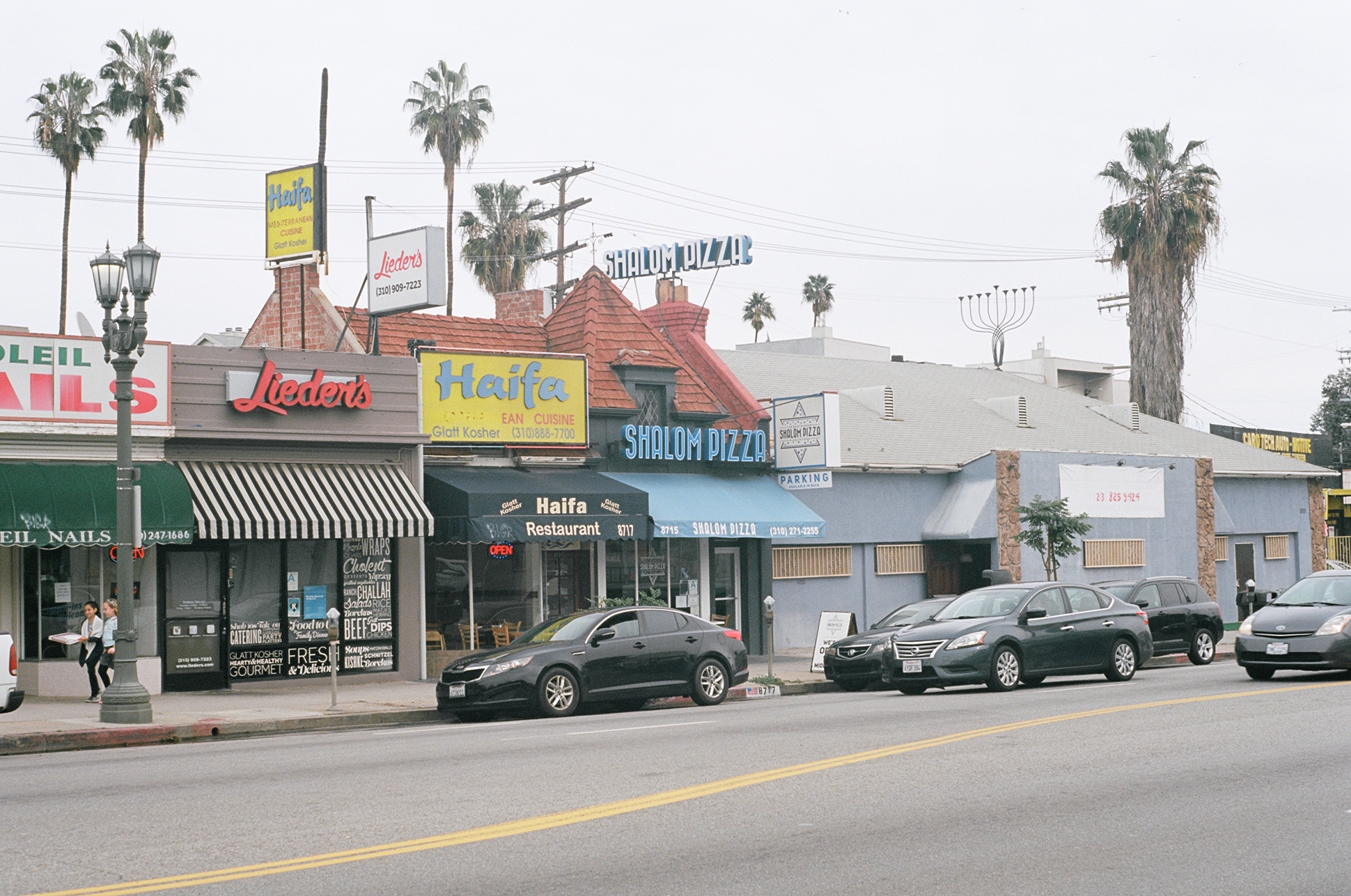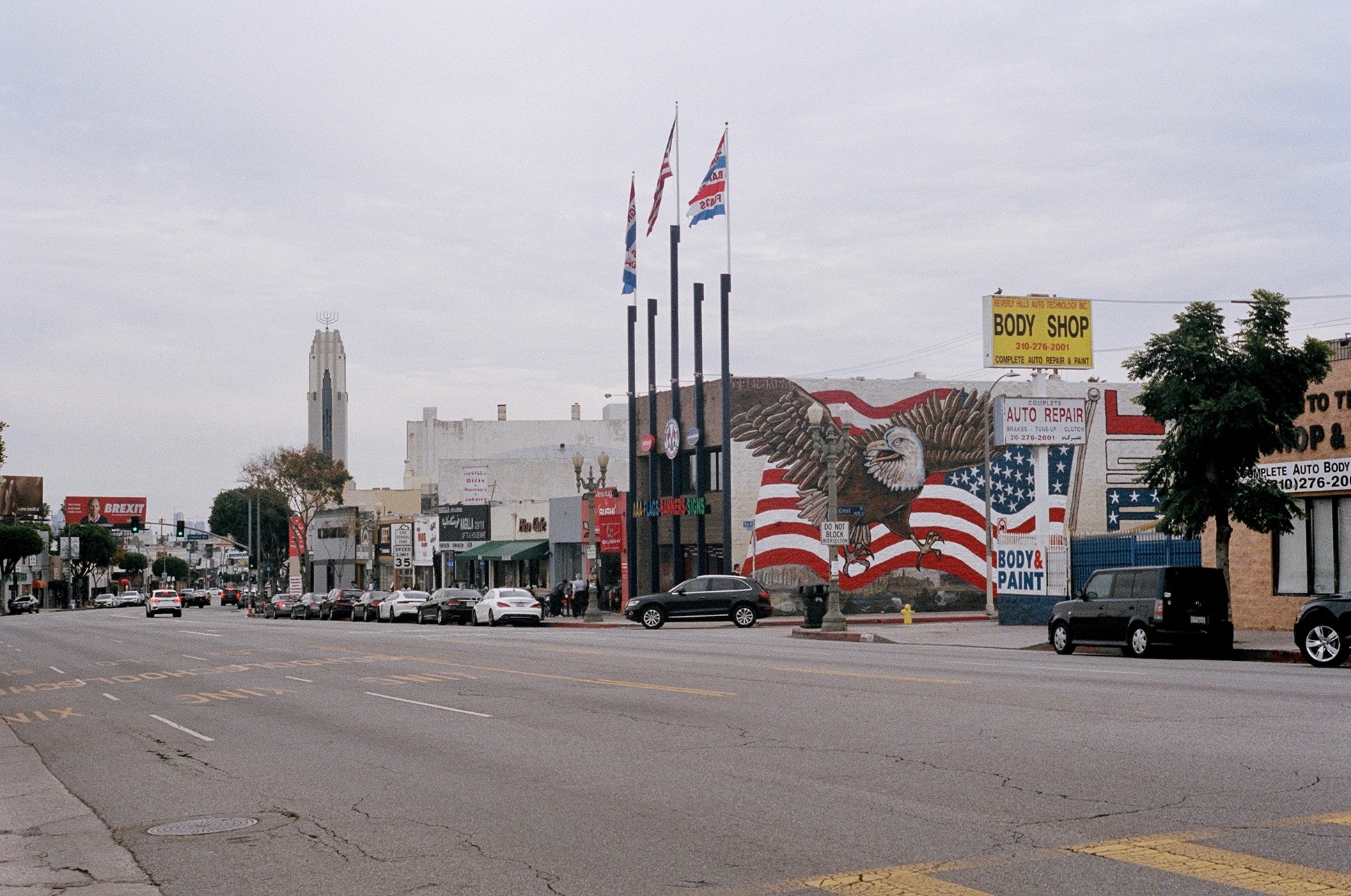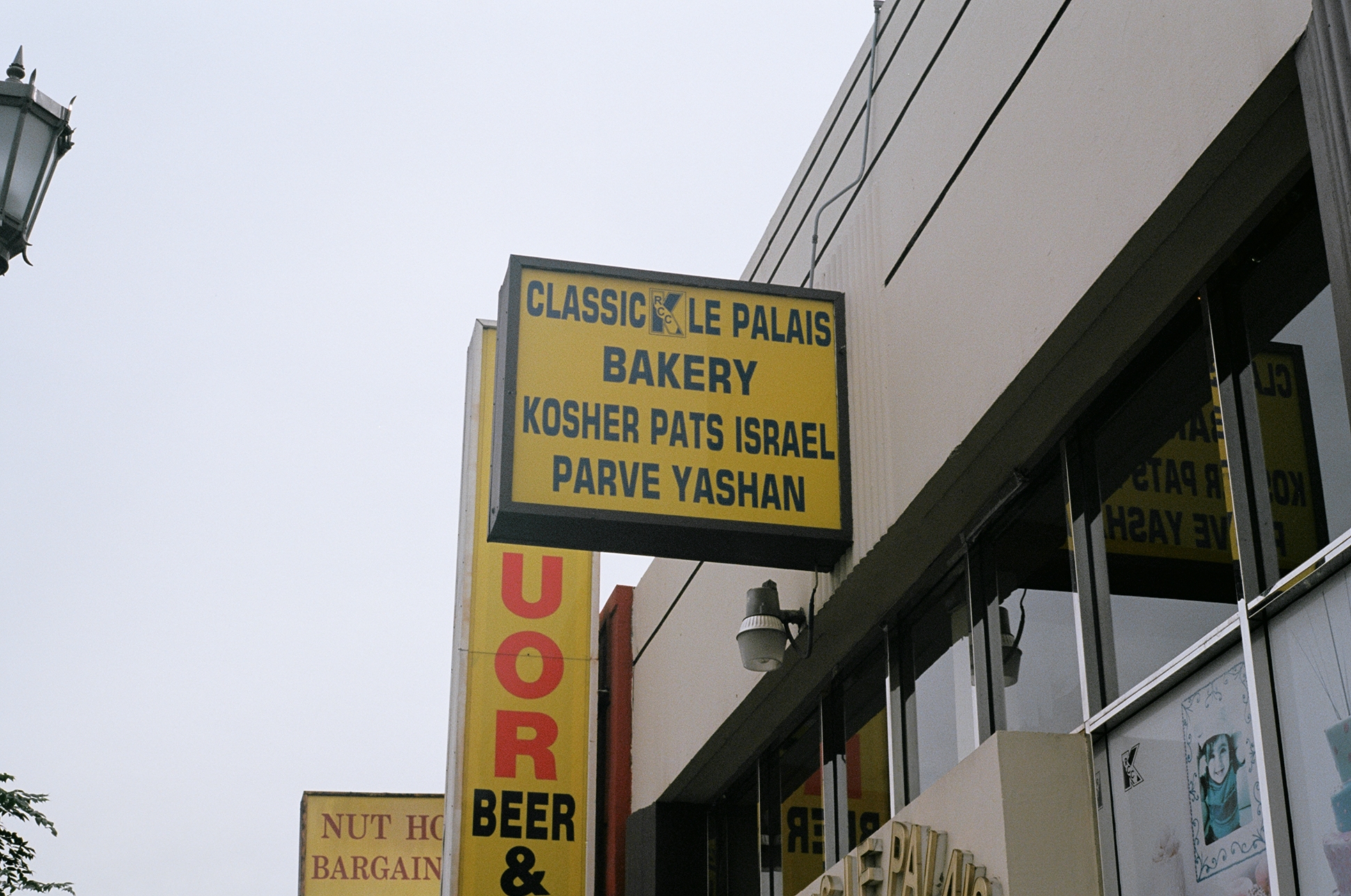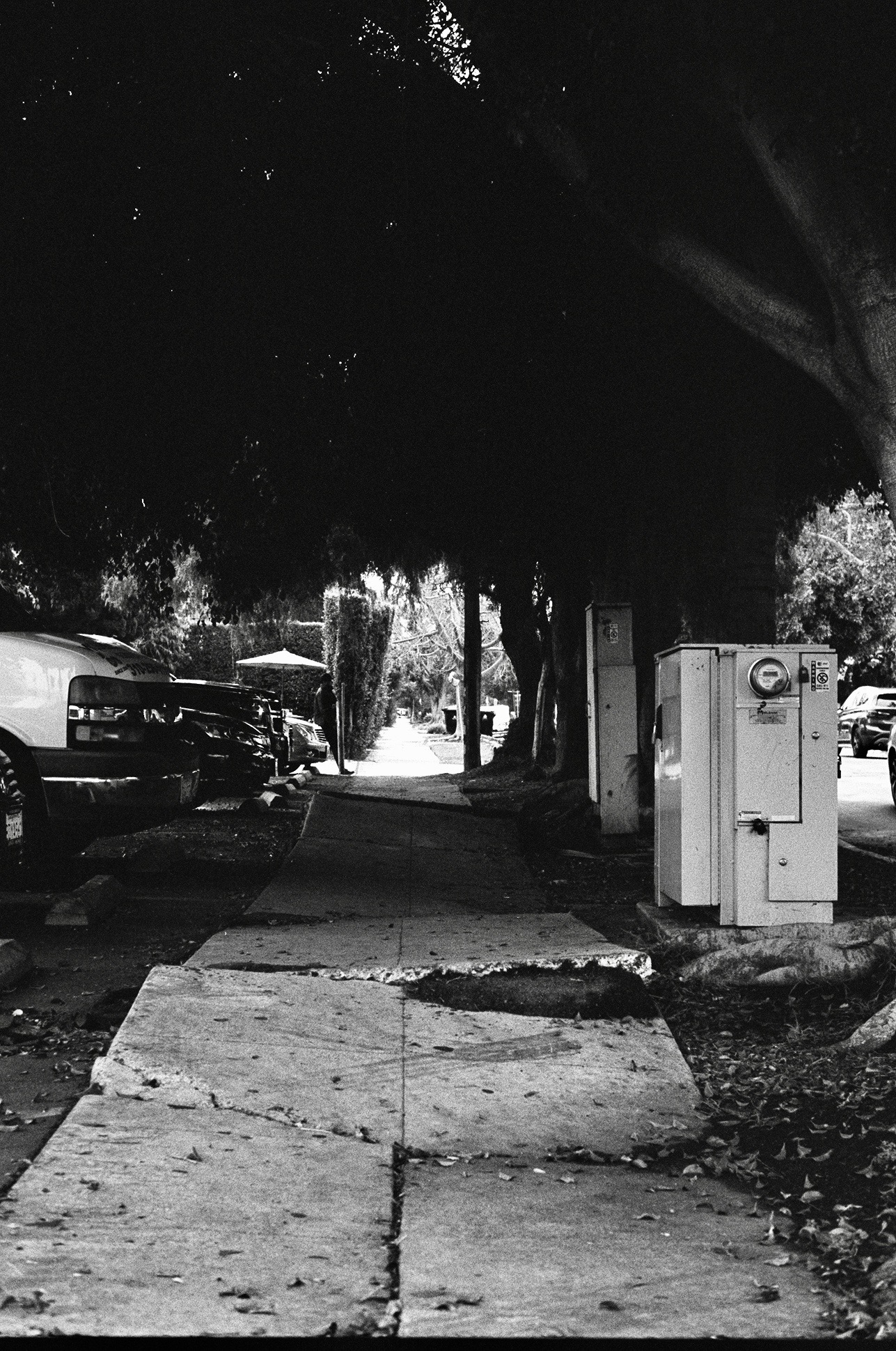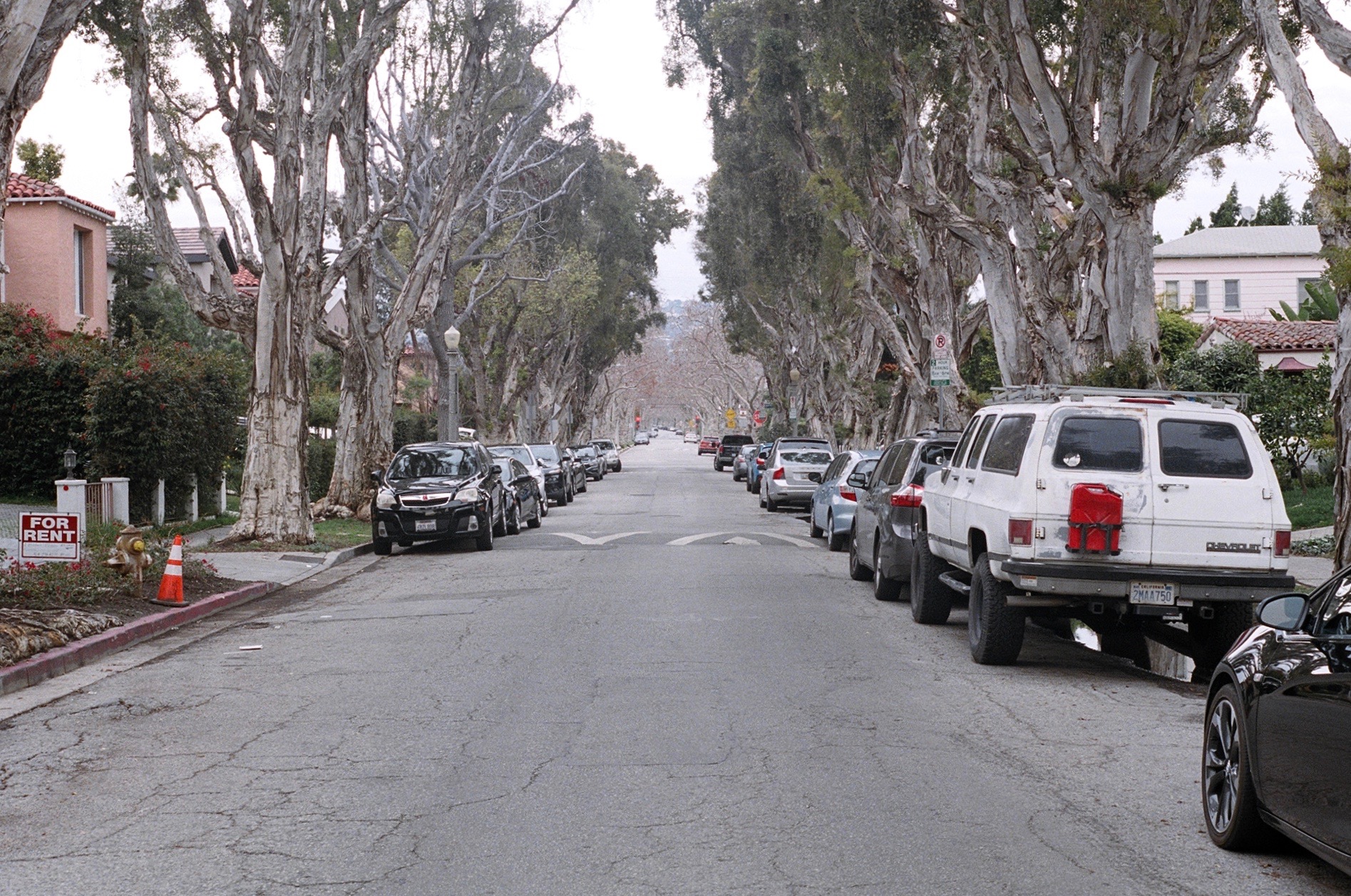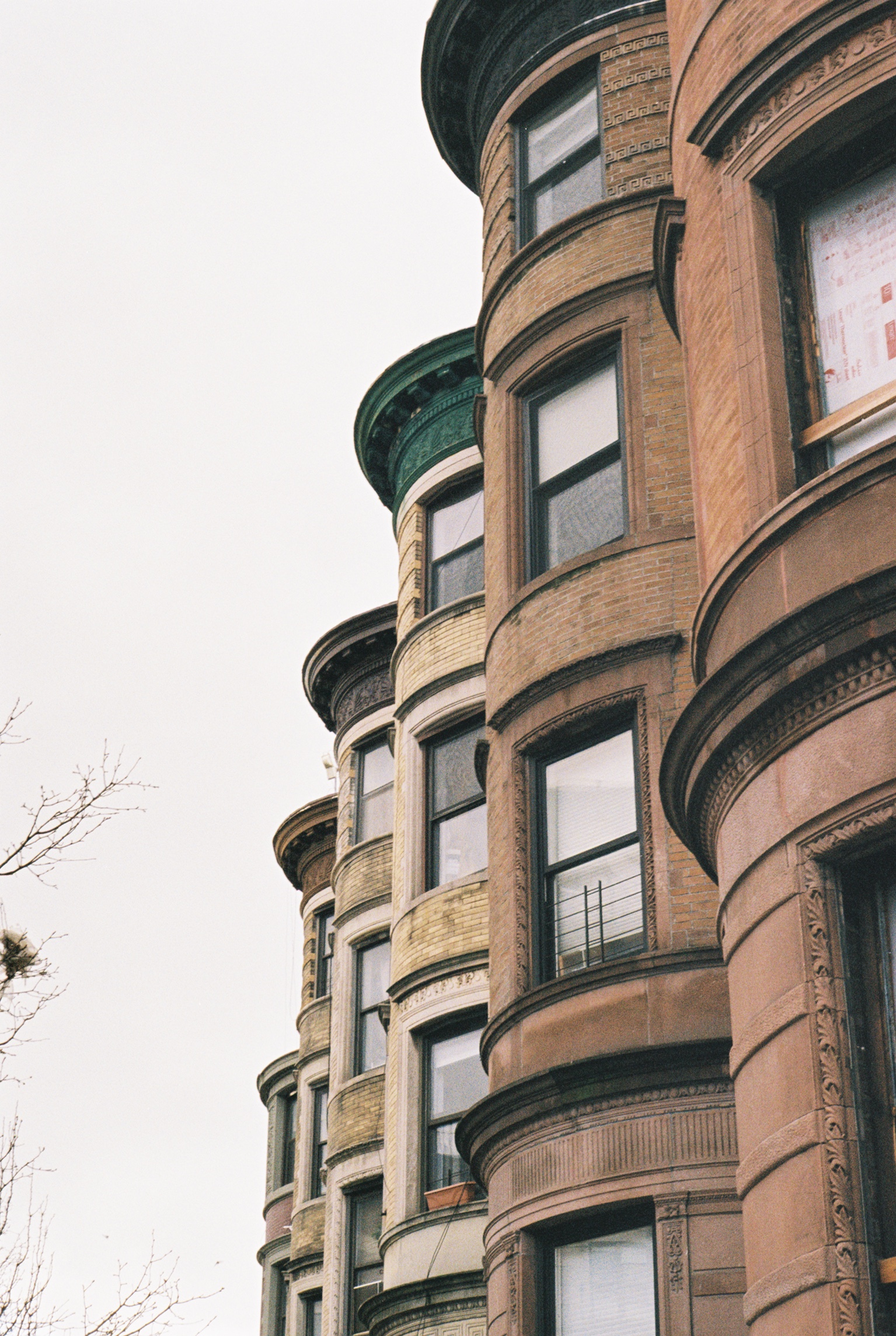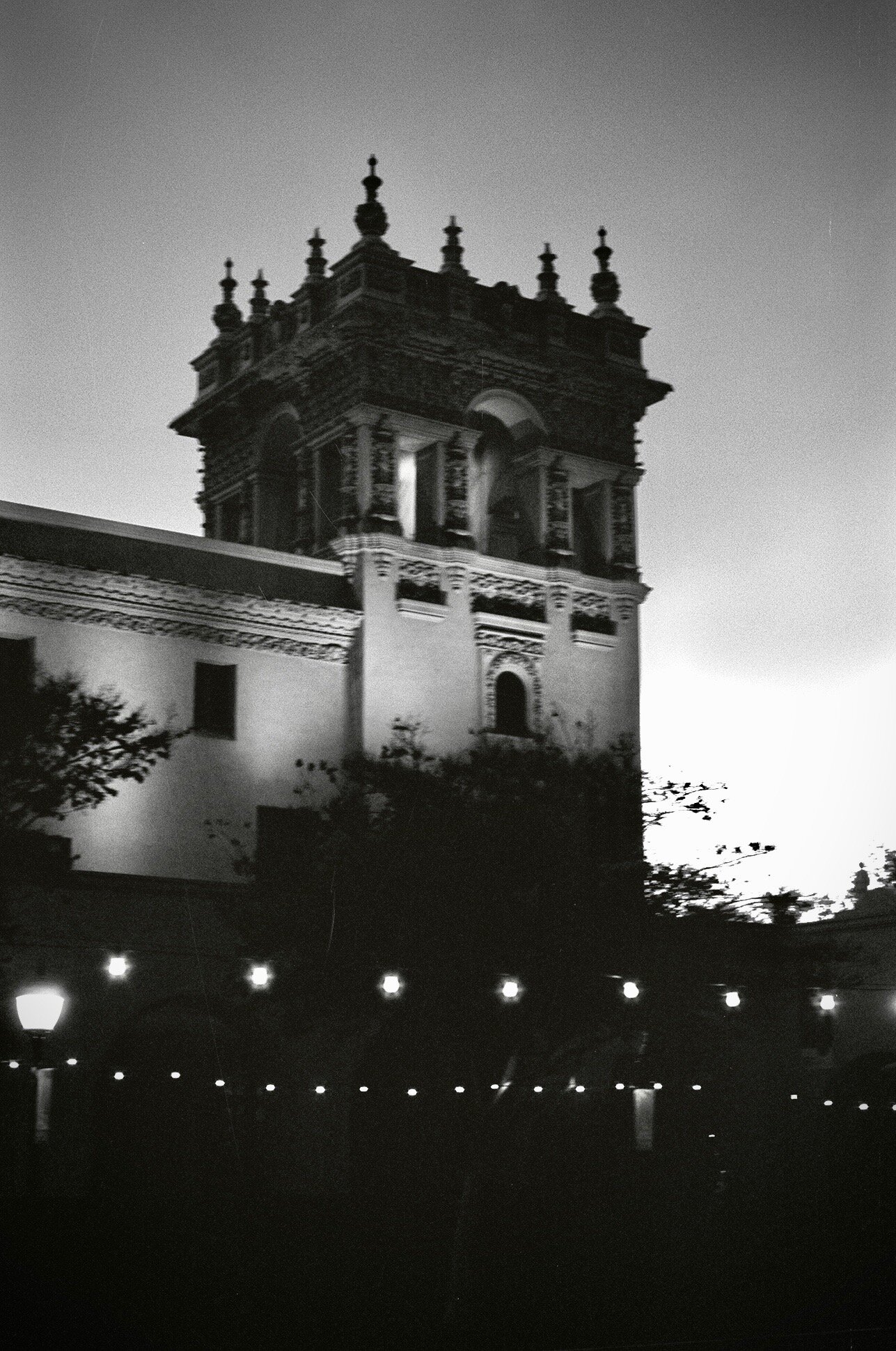PICO-ROBERTSON

Los Angeles and New York City: at once both victims and perpetrators in a never-ending comparison of the incomparable. The West and East coasts of this (sometimes) great nation cannot be scrutinized with any accuracy. No system of weights and measures can pit one against the other, and yet the temptation to throw both in a cage and see what happens will coarse through the veins of all who’ve experienced both metropolises and their raw, unflagging power in the flesh.
I myself am a hypocritical instigator in the debate and cannot help but draw out my thoughts here as I get ready to fly home to NYC after a month’s time in my native Southern California. When the debates do unfold, solicited or otherwise, we’re often left to point out the cultural institutions found distinctly amongst them. There are icons of both. It seems people always gravitate towards food as a starting point when the inevitable conversation arises. In N Out, may you be mentioned once more and forever in this publication, We Bow To Thee. Why? Because That’s What a Hamburger’s All About. But the East Coast? The East Coast, my friends, has the heaviest of hitters.
The Jewish Deli.
There are religious institutions from every creed on this Earth in New York City, Philly, Boston and the rest of the Eastern seaboard. Churches, chapels, cathedrals, mosques, synagogues, Buddhist temples, Hindu temples, Taoist temples, practicing Jedi congregations (I am not at all kidding, the Temple of the Jedi Order is a legally recognized faith, here is a copy of their tax exemption approval from the IRS)...the list goes on and on. Holy and sanctified though they might be, I must consecrate the Jewish Deli in this article as the Utmost High. The experience of eating a pastrami sandwich is a fast track to Divine Union for the wretched sinners among us. No prostrations. No fasts. No mantras. No asanas. Just pure, kosher bliss.
The Jewish delis of New York are what I (and generations of New Yorkers before me) cried out for in my time in Laguna. The awkward explanations in conversation with Californians as to why I strongly prefer New York over life in LA ended in blank stares and the sense that’d I might as well have joined Slytherin House or switched to The Dark Side. I am but a lonely Benedict Arnold in my sunny native land, unwelcome, unsatisfied and, after four weeks of my mom’s cooking and only completing my Apple Watch’s calorie burn goal an abhorrent three times this holiday season, an astounding 10 pounds heavier. Weighed down by the sedentary, morbidly chill lifestyle of SoCal and the new spare tire around my waist, I thought to myself, “You’re in so deep, why not go all out one last time before reeling your life in?” And with that, the dreaming of grease, of fat, of PASTRAMI kicked in. Of old school, no-BS Jewish deli food. Then it hit me.
Pico-Robertson.
We will go to Pico-Robertson.
I’d never done more than drive through it, and what better excuse than extra rolls of film lying around waiting to be shot.
But first,
There is no denying New York’s coronation as Deli King. It’s friggin’ New York, c’mon. New York has more Jewish residents than any other city in the world, even Jerusalem! In fact, the list goes: 1. New York 2. Jerusalem. And 3...who might it be? Tel-Aviv? Nope.
It’s Los Angeles. Los Angeles has the 3rd largest Jewish community in the world. And what does that mean? It means Jewish delis. West Coast Jewish Delis. This may be common knowledge to my Jewish readers, but trust me when I say that this incredible blessing of culinary and cultural perfection sadly remain unknown to many people in Southern California.
They exist.
I touched on one, Langers Deli, in last week’s piece, though in citing its glory I may have inadvertently implied that it were an anomaly in an otherwise Hispanic-heavy city. This couldn’t be farther from the truth. Lifelong Angelenos know that LA has some of the best delis as well as kosher food in general, if one only knows where to look. Even I, having only a week ago just eaten at one and discussed its glory at length, already forgot that there are many more to be had. And still, may I pause here to drive home the fact that this is not a food publication. I can hardly make my own popcorn, let alone provide anything in the way of sound criticism of a meal. I know what I like, what I don’t like (just about nothing), and that’s where the line is drawn in the sands of my understanding. This running narrative here is intended to do one thing and one thing only: encourage you to walk around areas of New York, LA and beyond that you’d otherwise overlook.
Pico-Robertson is one of those places.
Before getting carried away or regressing back into the deli speech, let’s take a look at our latest neighborhood in question. Unsurprisingly centered on the intersection of Pico Boulevard and Robertson Boulevard, Pico-Robertson is a Westside community bounded to its east by Carthay and Mid-City, the independent City of Beverly Hills to the north, and the neighborhoods of Beverlywood and Cheviot Hills to the south. It, like most of LA, is made up primarily of single family homes, though with 17468 people per square mile, it’s one of the densest neighborhoods in the city.
Crossing over Robertson Blvd along Pico. Pico-Robertson, Los Angeles. Kodak Ektar 100. Pentax K1000. Fletcher Berryman 2019.
Pico-Robertson, Los Angeles. Kodak Ektar 100. Pentax K1000. Fletcher Berryman 2019.
Pico-Robertson, Los Angeles. Kodak Ektar 100. Pentax K1000. Fletcher Berryman 2019.
Shalom Pizza in Pico-Robertson, Los Angeles. Kodak Ektar 100. Pentax K1000. Fletcher Berryman 2019.
Pico-Robertson, Los Angeles. Kodak Ektar 100. Pentax K1000. Fletcher Berryman 2019.
Driving through it, Pico-Robertson appears at a quick glance to be like many of the surrounding areas: funky old bungalows, larger Spanish Colonial style homes, a series of major thoroughfares and the occasional rusty old sign (if you’re an old-sign-o-phile this is place will be your jam).
And this, of course, is where driving fails you. A slow, aimless walk through the neighborhood reveals an enclave of Jewish culture as rich as anything you’ll find in Brooklyn.
Driving through, Pico-Robertson looks like most of Los Angeles. It’s walking that really offers up its gems. Kodak Ektar 100. Pentax K1000. Fletcher Berryman 2019.
My good friend Bud, a fellow Lagunan, joined me for this week’s mission and he too was skeptical towards the beginning. After all, there’s no clear boundary when heading into neighborhood to let you know you’ve arrived. It’s the sort of place where you wonder, “where is it?” when arriving at the point where Google suggests it lies. I suggested we walk up Pico, for if anything we’d at least find something worth eating (the undisputed king of food critics, one of my favorite writers of any discipline, and the first person to receive a Pulitzer Prize for food criticism, the late Jonathan Gold, got his start by setting out to “eating at every restaurant along Pico Boulevard”, a noble goal with which he more than succeeded).
Pico-Robertson, Los Angeles. Kodak Ektar 100. Pentax K1000. Fletcher Berryman 2019.
Pico-Robertson, Los Angeles. Kodak Ektar 100. Pentax K1000. Fletcher Berryman 2019.
A window at the Bis Chaya Mushka Chabad. Pico-Robertson, Los Angeles. Kodak Ektar 100. Pentax K1000. Fletcher Berryman 2019.
For a few blocks, not much caught our eye. A bungalow here, a mechanic shop there. We spaced out and lost ourselves in casual conversation, joking back and forth and noticing some graffiti on a truck stuck in an old parking lot. And then another, and another. Within a block the majority of folks around me had yarmulkes and Orthodox hats (of which there are many kinds, look no further than this Huffington Post article literally titled “The Many Hats of Orthodox Judaism”). Bud looked at me and said, “Man, this is like Brooklyn! I had no idea that this existed in LA”. I smiled and told him I couldn’t agree more. Where I live in Brooklyn on the border of Clinton Hill and Bed-Stuy, walking just one block north (from Dekalb & Kent near the Classon G up one block to Dekalb and Willowboughy, for the rare reader among us who may actually go there) transitions you into an entirely Hasidic section of town that unfurls all the way to Williamsburg over a mile north. That experience, of immediately crossing over into what feels like another culture (and is), is so much a part of the draw of New York for me and the millions of others who’ve come before. New York, it turns out, is not alone in this phenomenon.
The number of Jewish businesses surged and options I’d never seen in New York sprang out around us (not saying they don’t exist, just ain’t seen ‘em yet): Kosher Chinese food? A kosher candy store (Munchies, on Pico, be sure to check it out)? Shalom Pizza?! Soon we were in the thick of it. I felt my heart warm again in a strange nostalgia. Pico-Robertson is that fictitious neighborhood I always dreamed of:
A perfect blend of Brooklyn and Los Angeles.
I fell hard for this place. It’s buildings, again, are nothing to write home about (though the Bais Chaya Mushka Chabad modeled after the Brooklyn headquarters, is epic) and there’s not a ton going on. Hell, I might even call it sleepy despite its high population density on paper. Yet maybe that makes me like it even more: you get the joy of a pervasive Jewish-American culture (and the food that comes with it) on every block without abandoning any of the Los Angeles identity along the way.
Bibi’s Bakery Cafe. Pico-Robertson, Los Angeles. Kodak Tri-X 400. Pentax K1000. Fletcher Berryman 2019.
Pico-Robertson, Los Angeles. Kodak Tri-X 400. Pentax K1000. Fletcher Berryman 2019.
Schwartz Marketplace. Kodak Tri-X 400. Pentax K1000. Fletcher Berryman 2019.
B’nai David-Judea, an Orthodox shul (synagoge) with a unique blend of Art Deco architecture (it was previously a theater) and Jewish cultural accents. Kodak Tri-X 400. Pentax K1000. Fletcher Berryman 2019.
Our trek through Pico-Robertson was mainly one of walking and taking pictures. It was a Sunday morning, with hardly any traffic on Pico and no sense of urgency to be had. If you’re going to go their I’d recommend the same. Cut back into the residential streets for a bit; I can’t put my finger on it but I’m a huge fan of its vibe and you’ll have to trek over there to see what I mean. The areas back along its border with the City of Beverly Hills are full of quintessential California bungalows, a style of home that I will say with reckless bias are the coolest homes in existence (in close step with the Queenslanders of Australia, I once crashed at one in Kelvin Grove, Brisbane that made me briefly question California’s supremacy in the royal court of architectural styles for single-family homes). Walking aside, however, there is one place you need to check out: Pico Kosher Deli. Fresh off my religious experience at Langers Deli in Westlake, the thought of another hot pastrami even trying to compete with Langers felt blasphemous. But there it was, with an unpretentious hand-painted sign and more than a handful of seemingly happy people seated inside.
Side street, looking north towards Beverly Hills. Kodak Portra 400. Pentax K1000. Fletcher Berryman 2019.
Pico Kosher Deli. Kodak Portra 400. Pentax K1000. Fletcher Berryman 2019.
Bud and I entered, finding ourselves in a dream come true for any bonafide deli fan: original décor, no frills menus, customers who were clearly regulars running into each other and making small talk with the folks behind the counter. My curiousity ballooned into infatuation before I even landed on my plate. I ordered a hot pastrami, planning to judge the place on its deliverance of a classic rather than some obscure back pages item.
Holy, holy, holy….
I’m beginning to believe that Jewish delis are gates to Heaven whose entry tolls are the purchase of hot pastrami sandwiches with one complimentary side. I find God in these places, usually somewhere under the meats section. Pico Kosher Deli is one of those spots. I won’t pitch it against Langers. I won’t square them up. For Jewish delis, I’m slowly learning, are more like local congregations of the same faith, rather than competing institutions. An essence binds them all together in an informal autocephelacy with one another: that indescribable homey feeling that kosher food yields, a sense of being welcome, of coming home.
Pico Kosher Deli. Kodak Portra 400. Pentax K1000. Fletcher Berryman 2019.
It’s just, well, the best.
I’m not confident in the message of this post nor sure if a theme even exists. Such is the risk one takes with free-written long form literary journalism (a genre that may or may not exist?)
ll leave you with this:
Go experience the strange beauty that is Pico-Robertson if you ever find yourself in LA. You’ll find that the fantasy of a New York / LA fusion just may indeed exist...and here is where you’ll find it. Trying its kosher food at down-to-earth haunts like Pico Kosher Deli or Jeffs is as much an LA experience as wandering through Hollywood or Venice. These dietary rules, however arbitrary to outsiders, yield a goodness that can’t be faked.
Their sum is greater than their parts.
And such is the case with so many of these places I explore here on fletch.nyc…
-Fletcher




